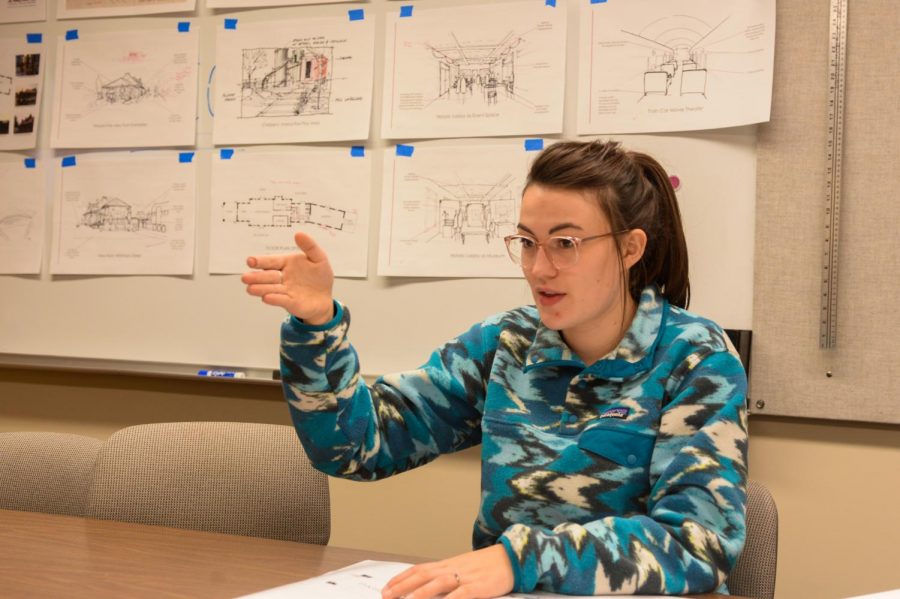Students working to restore historic Pullman Depot
Site renovations could include restaurant, gift shop, kid’s playground
DAVID PEDRAZA | THE DAILY EVERGREEN
“The main thing is to turn it into a center … that people will come visit,” interior design major Keyaira Mumford said.
November 26, 2018
In an effort to restore a piece of Pullman history, WSU students partnered with the Whitman County Historical Society to revamp the Pullman Depot, which once served as a train station for locals and visitors.
Keyaira Mumford, a junior majoring in interior design, said her grandfather rode the train when he attended WSU. She said restoring the depot would revitalize a site that used to be an integral part of the city.
“It’s kind of forgotten right now,” Mumford said. “For me, I think it represents an opportunity to bring new life into the area and turn a key part of Pullman’s history into a central part of downtown.”
Mumford, who is also one of the lead interns in the Rural Communities Design Initiative (RCDI), said the historical society wanted to preserve the depot and turn it into a heritage center. RCDI works with groups in rural communities to prepare the early stages of construction before consulting an architecture firm, she said.
Earlier in the semester, Mumford said RCDI visited the depot and researched different ways to renovate the site. The group hosted a workshop with historical society members and community members to exchange ideas and decide what would be built.
“We’d lay tracing paper over and just start drawing,” she said. “[We’d] just work with them to think through what they want.”
Mumford said there may be multiple workshops depending on the feedback they receive and what concepts could be developed further.
“We’ve done a lot of the grunt work already,” she said. “Now we’re just refining everything to give to them as a package.”
Mumford said one of the spaces in the floor plan includes a restaurant and patio area. There would also be an event space that could be rented by individuals or groups and a gift shop.
Another concept the group is considering is a children’s playground area near the depot, which would consist of mini train tracks surrounded by little Palouse hills, she said. There would also be a water tower and a splash pad, as well as a grain silo-shaped slide.
“The main thing is to turn it into a center in the community that people will come and visit,” Mumford said.
RCDI Co-director Michael Sanchez said students from architecture and interior design courses who participate in the project are able to get real-world experience that cannot be replicated in a class by analyzing the needs of the site and the client.
The project would also help bridge the gap between students and the community they live in, he said.
“It’s a great opportunity to have a connection between a growing city and [its] history,” Sanchez said. “Projects like this are a way for us to connect to the past.”











